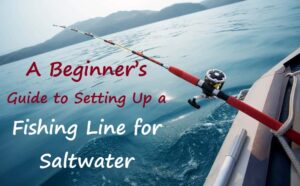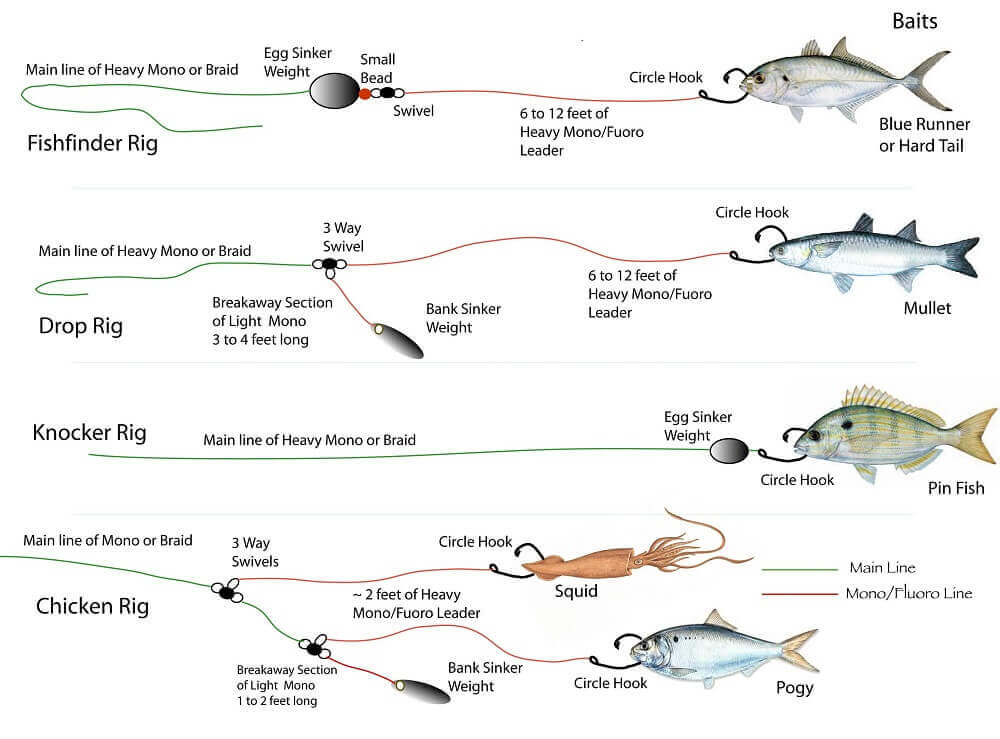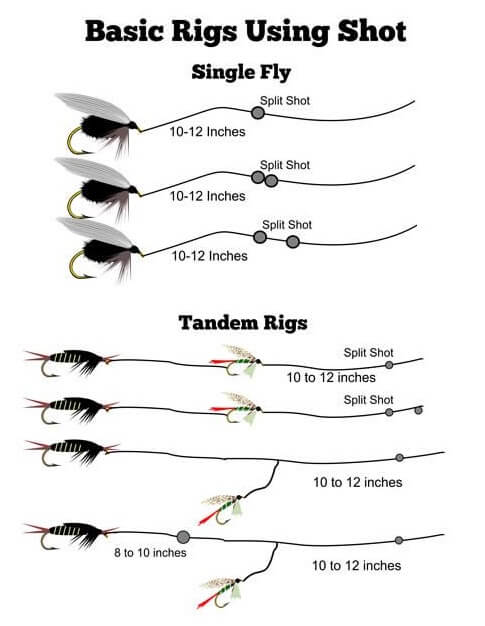
A lot of fishing enthusiasts ask, “how to set up a fishing line for saltwater? It seems like an easy task to buy fishing equipment and patiently wait for a fish to get hooked.
However, in real life, fishing is much more complicated and requires a lot of basic knowledge – for example, you need to know how a fishing reel works and how saltwater affects your equipment.
Setting up your fishing equipment to get the best results is a feat on its own. As a fisherman, you want to have a good experience and bring in a respectable haul of fish at the end of the day.
To accomplish this, you need first to understand the principles of choosing the best spot to rig your fishing line.
Why Set Up a Fishing Line in Saltwater?
It is well-known that fishing in freshwater is much easier than fishing in saltwater. However, freshwater fish are known to lack flavor and texture when it comes to eating them.
On the other hand, saltwater fish have a specific briny or salty taste since they live in water bodies with high amounts of salt.
Fishers earn their income by selling their products to the food industry. Restaurants, individuals, and shops within this industry want flavourful products. Since saltwater fish are considered to have more flavor, they are more desirable.
This is why people prefer to fish in saltwater to find such catches and make a profit. Keeping this importance of saltwater fishing in mind, we will move on to the basics of how to set up a fishing line for saltwater.
Fishing Line
The right fishing line plays an important role in fishing setups for saltwater bodies. If your fishing line is not sturdy, it might break if the fish is too big or applies too much force onto the line.
No one wants to spend time setting up their equipment and patiently waiting for a catch only to have their line snap.
As such, when choosing a fishing line, you need to look at its maximum pressure rating closely. At the very least, you should have a fishing line that can withstand 40-50 pounds of force when fishing for saltwater fish.
At the same time, you also need to make sure that there is enough line in your baitcaster so that your rod is not dragged into the water when a fish is hooked.
There should be enough fishing line in your reel to allow the hooked fish to travel at least 4-5 meters before you start pulling it, in case you are not able to respond immediately.
A fishing line is made of strong materials such as nylon in single or multiple strands. Each implementation has its own benefits and uses.
Types of Fishing Lines
Fishing lines come in various sizes. All sizes are further divided into different categories based on their physical attributes and limitations.
There are multiple categories of fishing lines that can withstand the pressure from saltwater fish, and these are elaborated below:
Monofilament
This type of fishing line is the weakest since it consists of a single strand of a filament and is easily susceptible to snapping under pressure.
Thermal filament
A multiple-strand implementation of filaments is, without a doubt, sturdier and can last longer under great force. Thermal filament consists of multiple strands that are bonded together through thermal reactions.
This way, your fishing line technically has more strands and can handle the extra weight of saltwater fish.
Braided filament
A braided filament is also a multi-strand implementation of a fishing line. It consists of multiple strands of the line that can survive the immense pressure from saltwater fish such as tuna. Braided fishing lines are thicker and are suitable for fishing yellowfin tuna off seashores.
Basic Aspects of Setting Up Fishing Line
We have established the reason for rigging fishing equipment in saltwater. Now we can start familiarizing ourselves with the principles of how to set up a fishing line for saltwater. Your fishing line is dependent on the following factors:
- Fishing equipment
- Fishing environment
Fishing Equipment

Saltwater is quite different from freshwater because it is not recommended that you use freshwater fishing equipment in saltwater areas.
This is because fishing reels are designed for specific water bodies, and the materials they are made from are also chosen accordingly. There are a few features that vary for saltwater and freshwater that you need to look out for:
Durability is one of the most important features of a baitcasting reel. Every baitcaster is made from different materials and caters to the needs of different customers.
Since you will be fishing in saltwater, you will need to buy equipment that can withstand corrosion and other saltwater fishing issues.
Furthermore, to decide what equipment to buy, you need to figure out the type of fish you are looking to catch.
A larger fish will require equipment that is structurally stable and can withstand high amounts of force. As we all know, the basic components you need are a fishing rod and a baitcasting reel.
- Fishing rod
Saltwater fish are relatively larger than freshwater fish and are not as docile. This is why you need a rigid, metal fishing rod that is lightweight and can handle the force the fish will undoubtedly apply to the rod when it is hooked.
The rod should be strong enough not to snap and should possess enough stretching potential if you bag a large fish.
- Baitcasting reel
A baitcasting reel is the main part. It contains all the mechanical moving parts that allow the fisherman to pull out a fish from the water. It consists of a rotating knob-wheel and complex gears that operate when a fish is hooked onto the line.
Your focus should be entirely on the material used to make the fishing rod and the housing frame of the baitcasting reel.
There are many different options available. Cheap materials include plastic or composites that are immune to corrosion but do not possess the structural integrity that can handle a saltwater fish – beware of those!
Fishing Environment
If you are going to go out to the sea on a boat, you need to make sure that your fishing reel is rust-resistant. It is best to use materials that can last long and remain durable despite the rust-causing air around saltwater bodies.
The atmosphere around saltwater can cause more rust to form (as opposed to the case in freshwater) due to the large quantity of salt in it.
This is why it is a good decision to choose materials such as stainless steel or carbon metals that are relatively rust-resistant and lightweight in the case of carbon.
A good baitcasting reel can even be found for under $150. It would fulfill all the requirements for saltwater fishing.
A fishing rod that is flexible enough for large fishes can also be found for under $100 if you order it online.
Where to Set Up Your Equipment
Many people make a common mistake and believe that all they need to do is set up the fishing rod anywhere near saltwater, and the fish will come to the bait.
This is only true for small fish that live in shallow waters. The truth is that not every fish lives in the same place.
Before you go fishing, familiarize yourself with the environment. If you want to catch bigger fish, then you might have to go a little further off the coast on a boat. There are many deep areas near the coast as well if you do not want to go offshore.
Find a cliff-side and search there. Sometimes there are areas where the shallows end, and a deeper water surface can be seen. Here you can find relatively larger fish. However, if you want a true catch, you will need to go out to sea.
How to Set Up a Fishing Line for Saltwater

Now comes the fun part of actually assembling your equipment and setting it up in the saltwater body in the spot you have chosen based on your understanding.
Particular steps need to be followed when setting up a fishing line in saltwater bodies. While the basic concept mirrors the freshwater method, it is best to follow the methods described specifically for saltwater.
If you are completely new to the concept of fishing in saltwater, don’t stress. You can learn the techniques of a professional fisherman in a matter of minutes, and you can practice them in real life.
This way, you can master each technique over the course of a couple of weeks. Before you know it, you will teach your peers and family how to set up a fishing line for saltwater.
You could always buy a random fishing rod and reel with a fishing line and go ahead. However, there is no guarantee that you’d be able to catch anything or whether your equipment will function properly.
It is best to buy the components of a fishing reel separately and assemble them yourselves. This way, you know what your equipment is capable of and what its limitations are.
String the Fishing Line
Choose the correct type of fishing line based on the circumstances you would be facing. It is recommended to use a multi-braided fishing line. Your fishing rod should have a guide on it.
Put the line through these guides and pull at least a foot of line for yourself. Be sure to drift the tag to the end of the line and onto the reel with the help of a fishing knot.

Get it hooked
Remember to choose a hook proportional to the bait you will be using and the type of fish you intend to catch. There are multiple types of hook, and every hook has different requirements according to the type of fishing line you use. Some hooks do not have a big enough hole for your fishing line if it is multi-stranded.
The hook should be perfectly in sync with the fishing line. Make sure that you thread the tag end to the eye for the fishing line.
You can do this by using gentle pulls and moving it accordingly to come out of the loop.
This way, you do not have to worry about any inconvenience.
Hook the bait
The bait plays a vital role when fishing in saltwater. Be sure to choose the correct bait depending on the type of fish you want to catch. A bigger fish will require a bigger and better bait.
Attach the bait to the hook and try to conceal the hook using the bait as the cover. This is just good practice. You don’t want your hook to be visible underwater to the fish since any foreign object attached to the bait might alert their senses.
All that is left to do now is to thread the sinker to the fishing line. There are many different types of sinkers that you can choose from but do remember to put one onto the line.
A sinker is beneficial because it will ensure that the bait goes into the water instead of floating on the surface.
Conclusion
We hope that you now know how to set up a fishing line for saltwater. By following the tips given in this article, you should have a successful saltwater-fishing trip!
